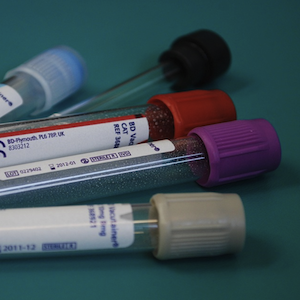 Smart Citations
Smart CitationsSee how this article has been cited at scite.ai
scite shows how a scientific paper has been cited by providing the context of the citation, a classification describing whether it supports, mentions, or contrasts the cited claim, and a label indicating in which section the citation was made.
Evaluation of Coaguchek®Pro II coagulation testing device performance to assess direct oral anticoagulant action. The DOAC-CHECK study
Direct oral anticoagulants (DOAC) measurement is recommended in specific conditions. A point-of-care testing should be used in emergency to qualitatively rule out relevant DOAC concentrations. The DOAC-CHECK Study aims to evaluate whether the use of CoaguChek® Pro II (Roche Diagnostics International Ltd, Rotkreuz, Switzerland) coagulation testing device can provide reliable information in patients treated with DOAC. The study was carried out in two FCSA (Italian Federation of Thrombosis Centers) centers. We choose 3 different concentration thresholds for our analysis (30, 50 and 100 ng/mL) and by ROC curves the ideal cut-off point was selected to be the one that yielded a sensitivity of at least 95% associated with the highest possible specificity. 512 patients were enrolled. For Edoxaban and Rivaroxaban, both CoaguChek® Pro II prothrombin time (PT) and activated partial thromboplastin time (aPTT) tests showed a sensitivity >95% corresponding to satisfying specificity values; negative predictive values resulted in the range 90-100%. At variance, CoaguChek® Pro II PT and aPTT tests did not seem to be useful for identifying Apixaban and Dabigatran concentrations higher than the pre-defined thresholds. Our results suggest that CoaguChek® Pro II coagulation testing device can be used to qualitatively identify relevant concentrations of Edoxaban or Rivaroxaban, but not of Apixaban or Dabigatran.
How to Cite

This work is licensed under a Creative Commons Attribution-NonCommercial 4.0 International License.
PAGEPress has chosen to apply the Creative Commons Attribution NonCommercial 4.0 International License (CC BY-NC 4.0) to all manuscripts to be published.

 https://doi.org/10.4081/btvb.2022.37
https://doi.org/10.4081/btvb.2022.37






